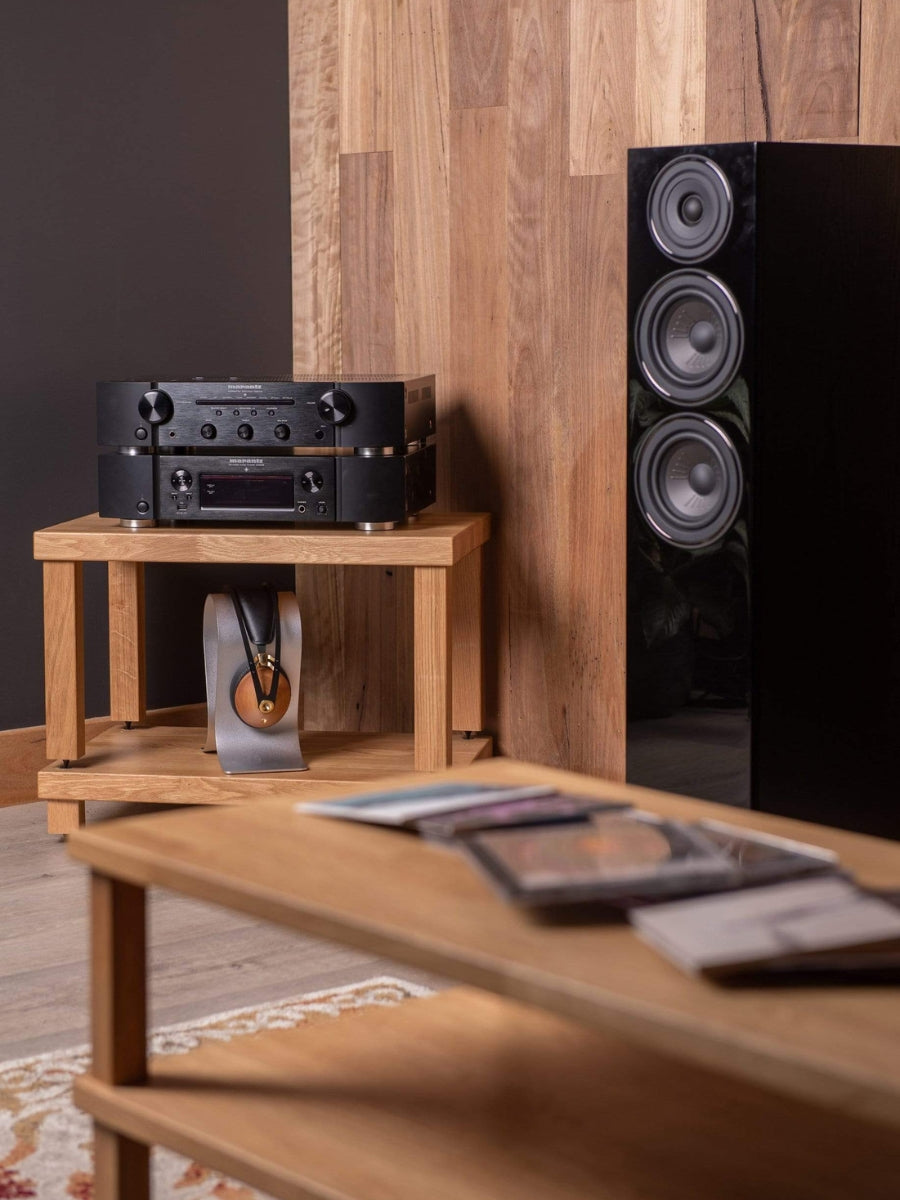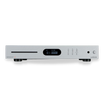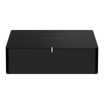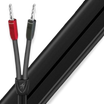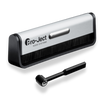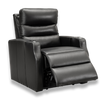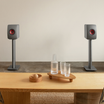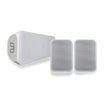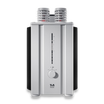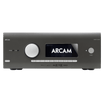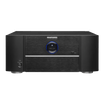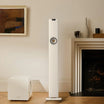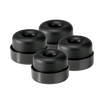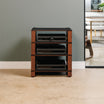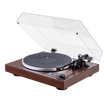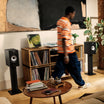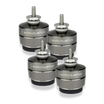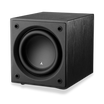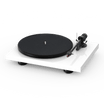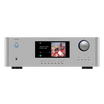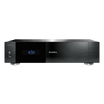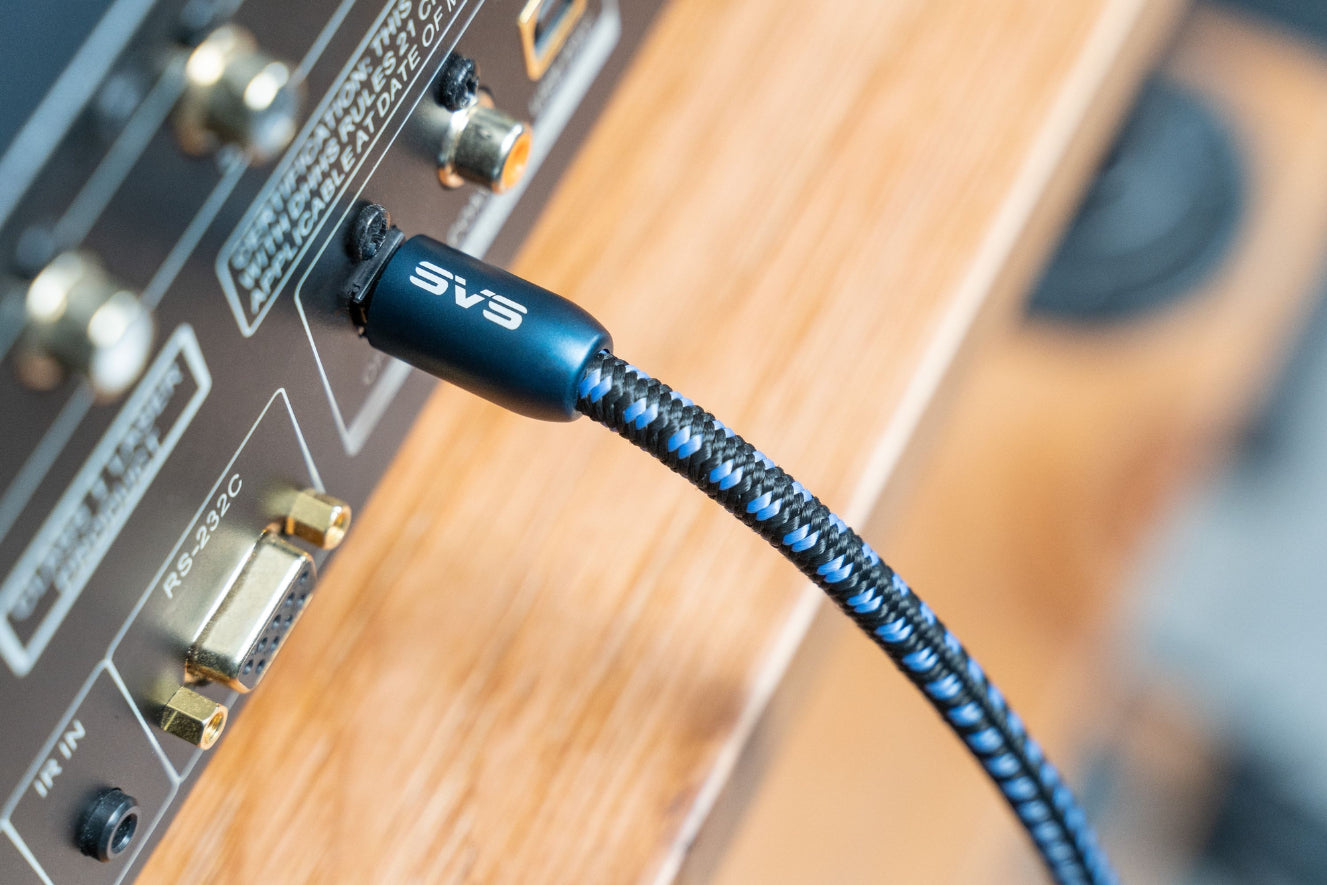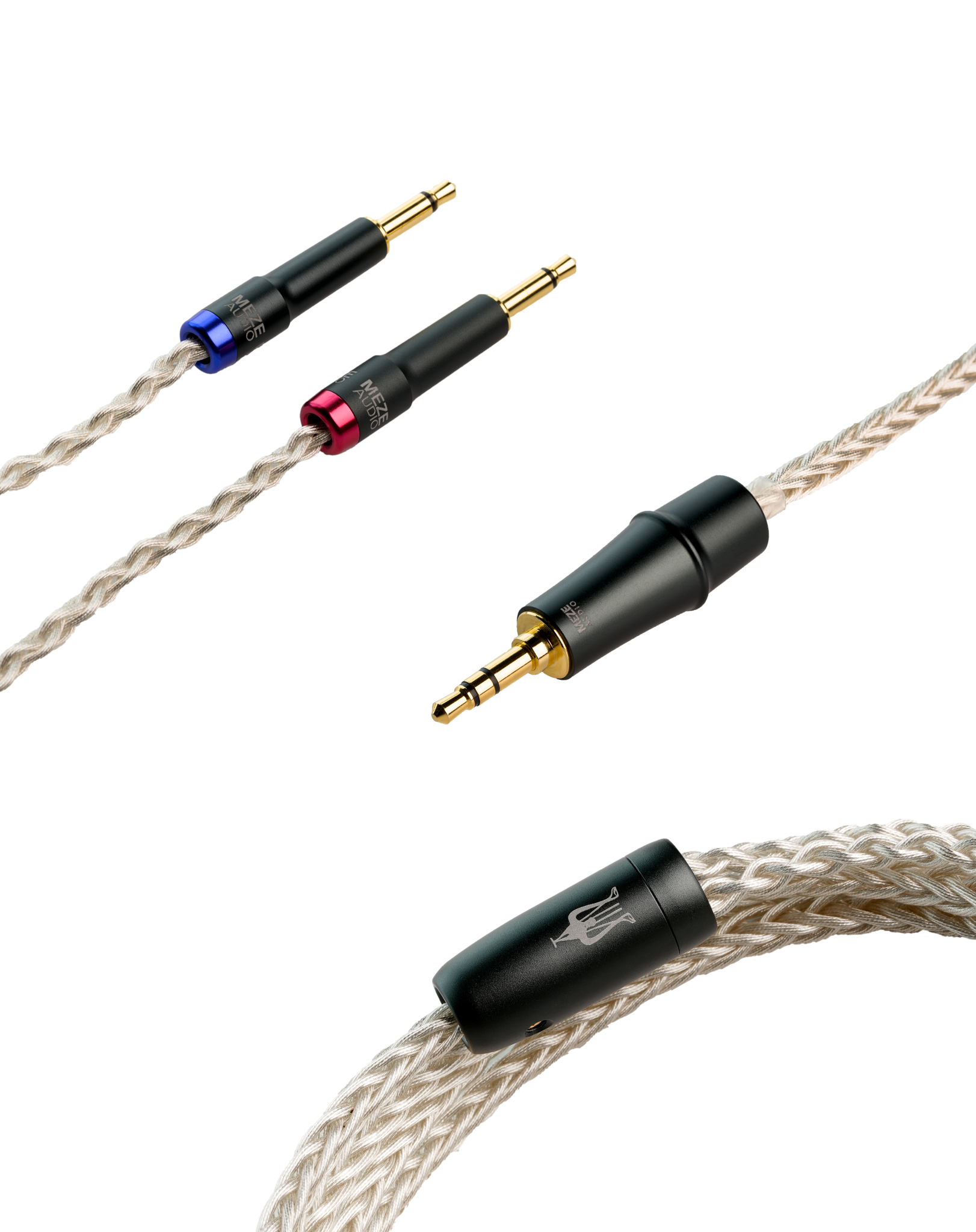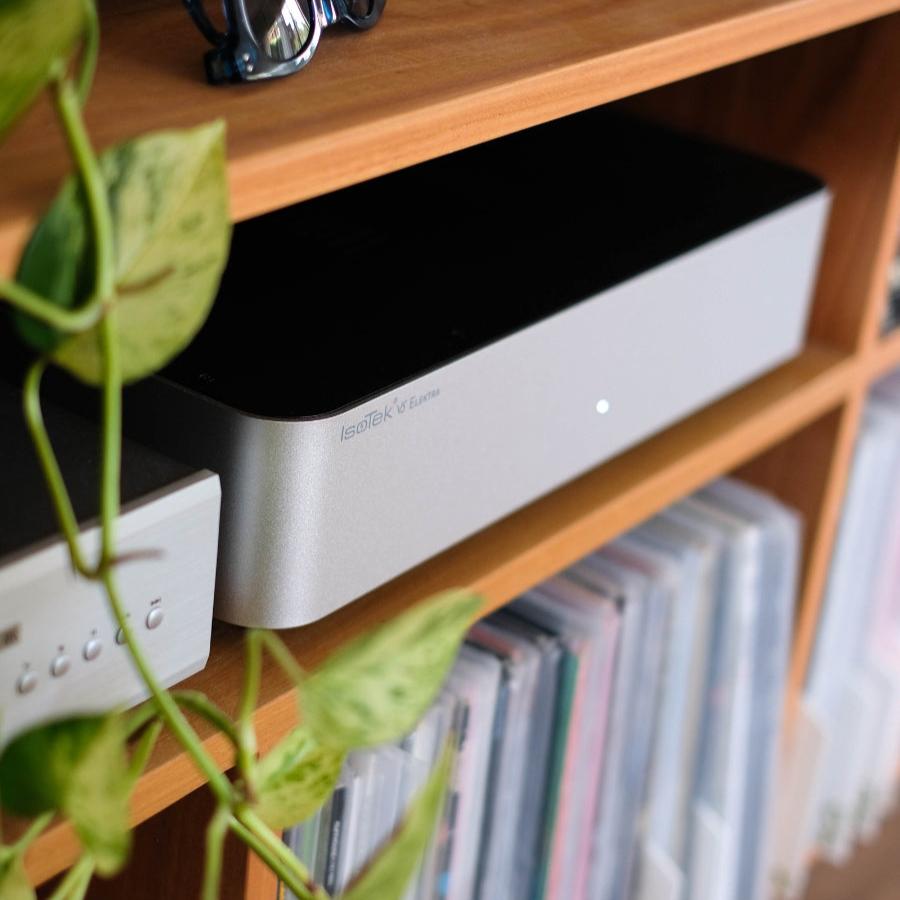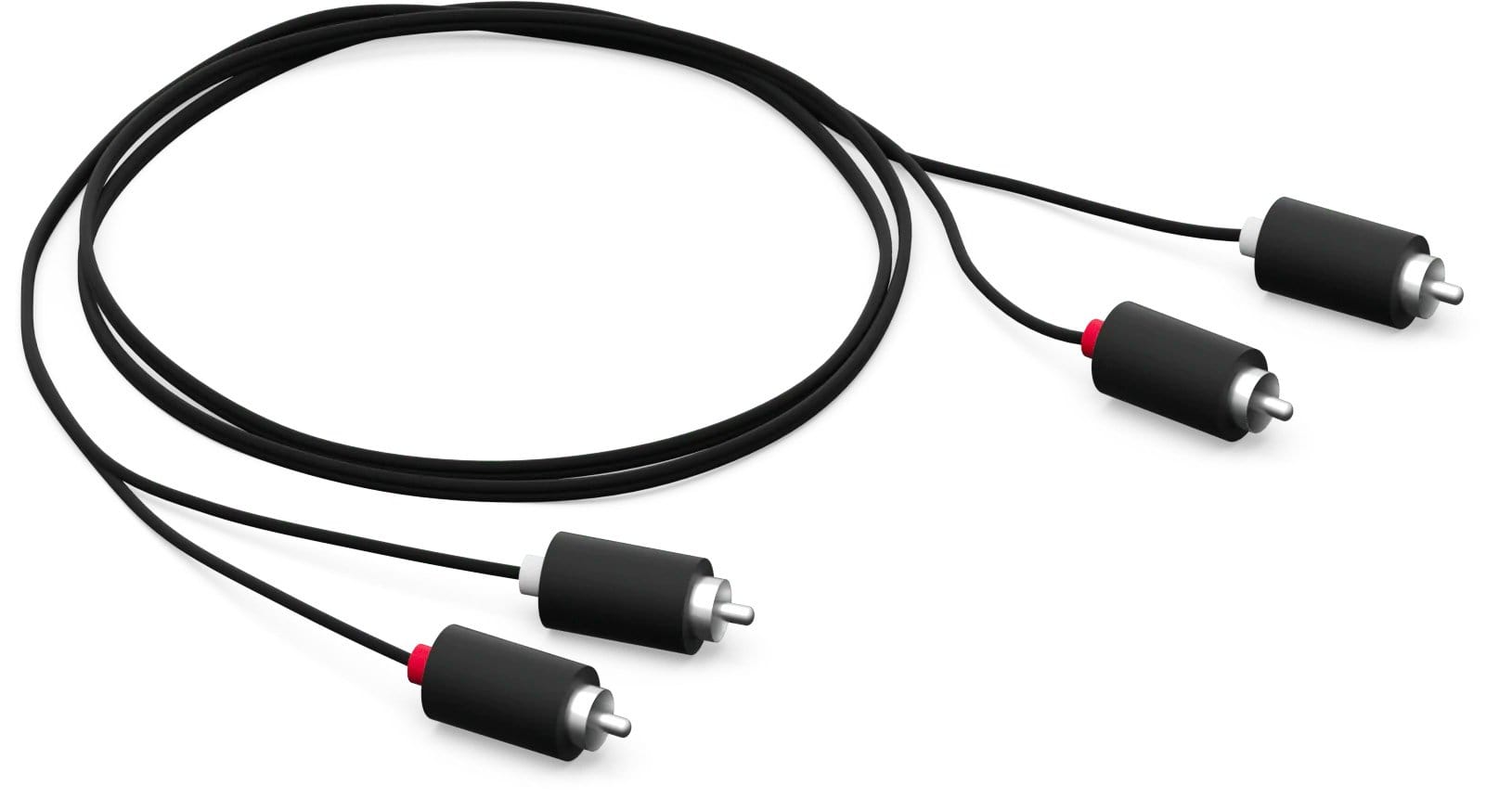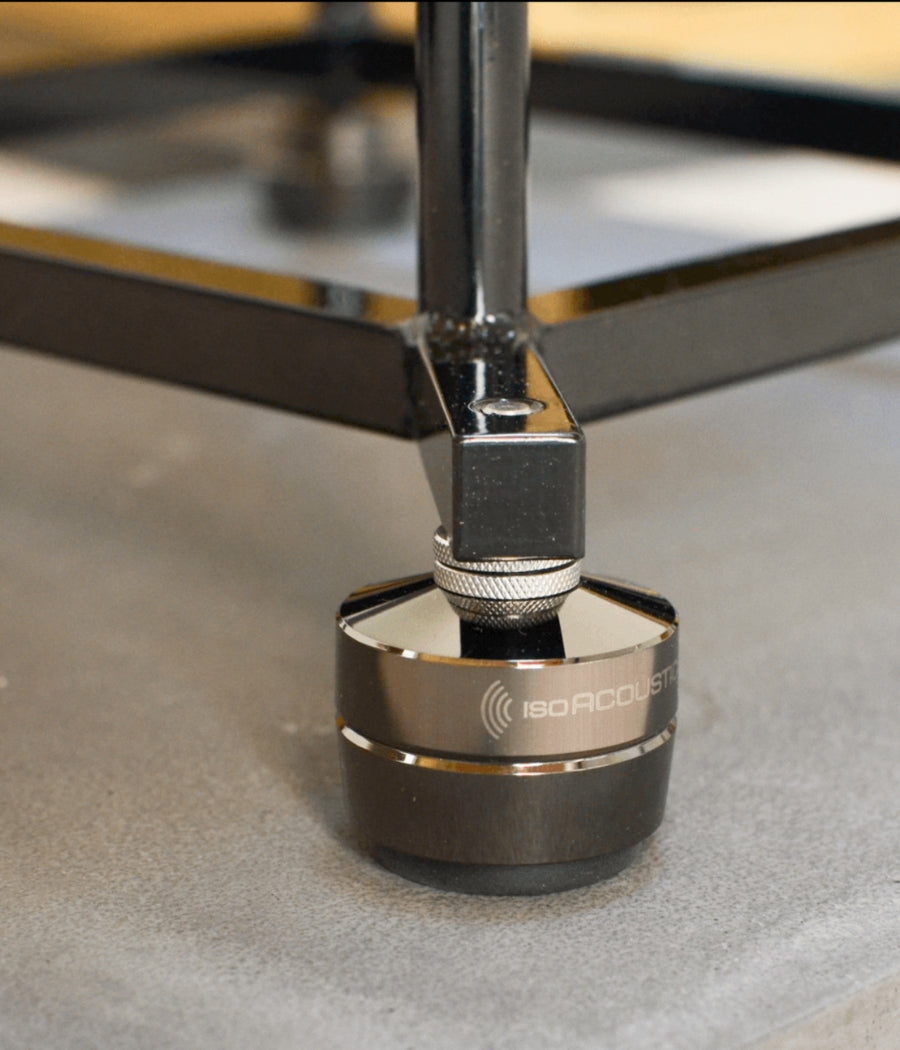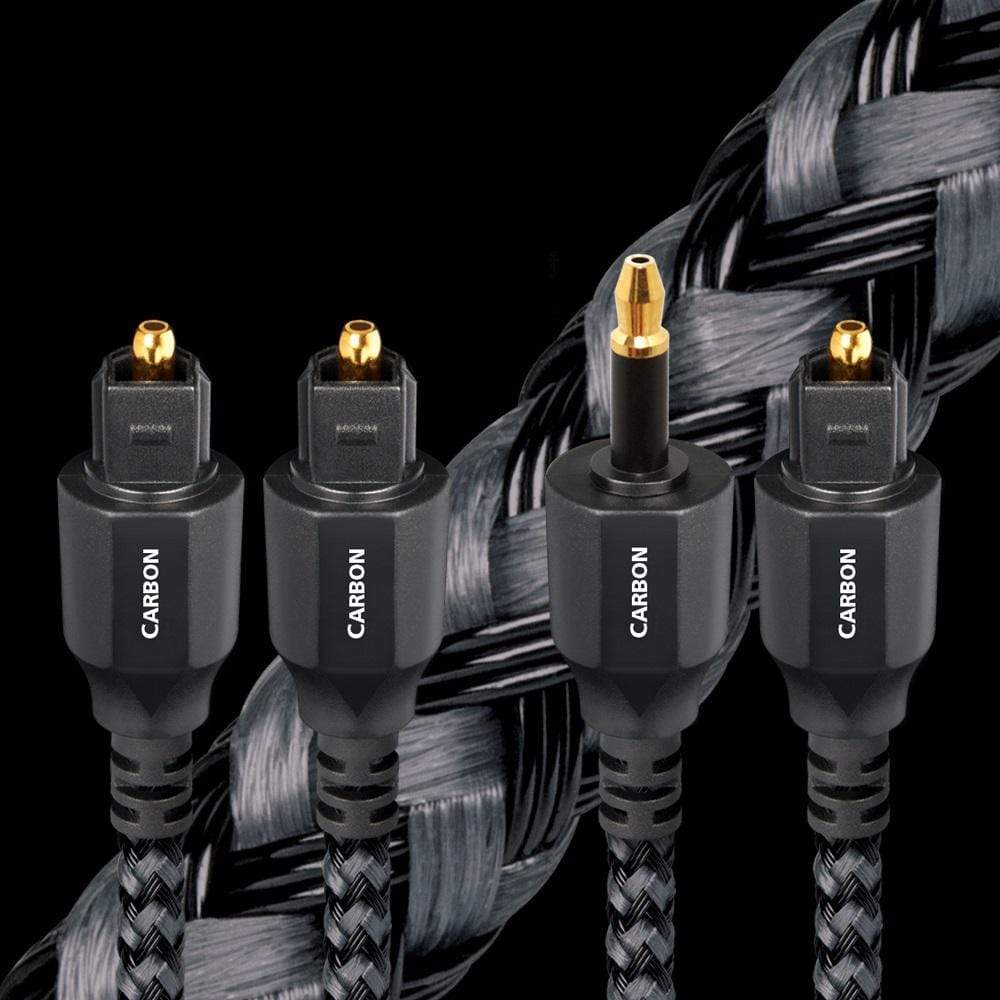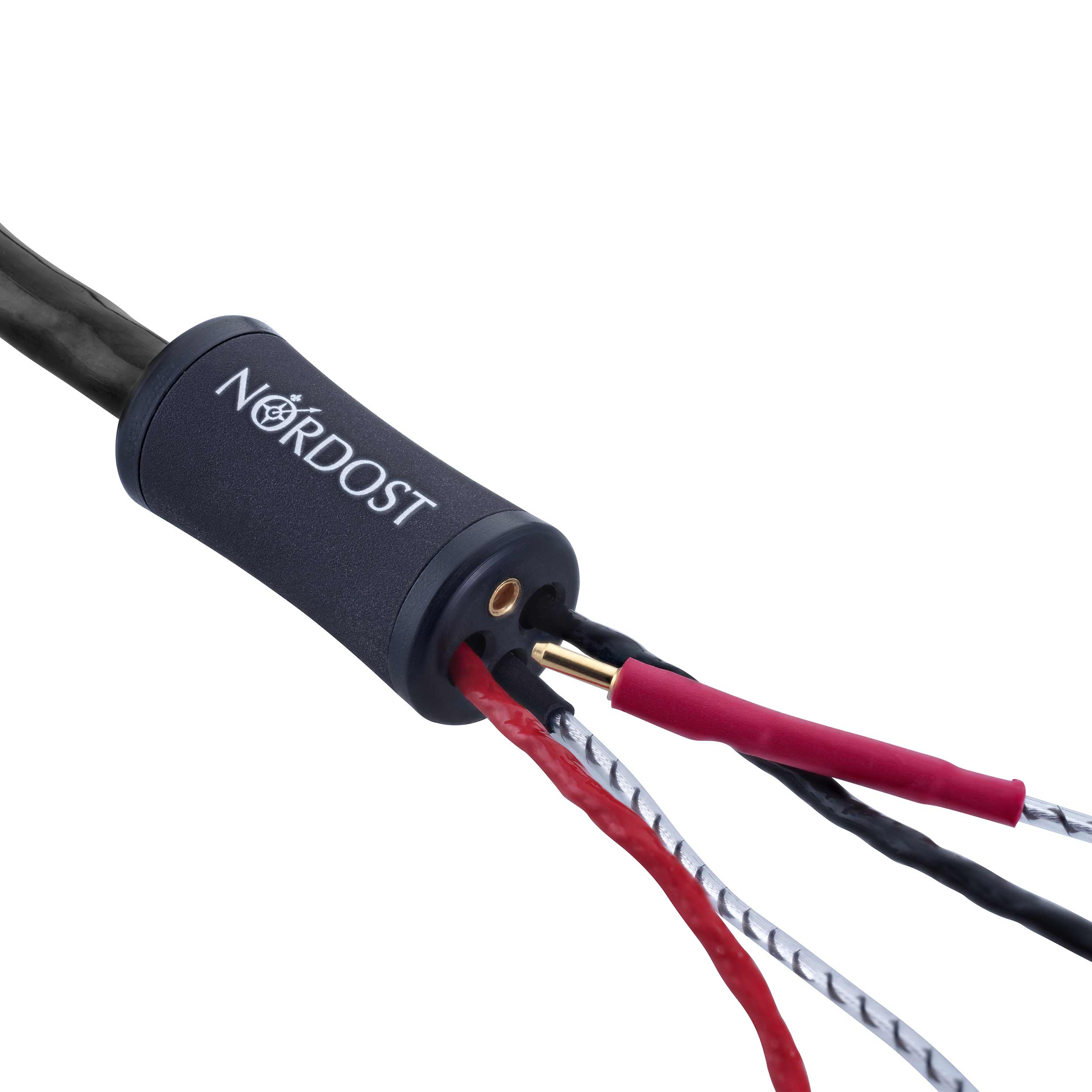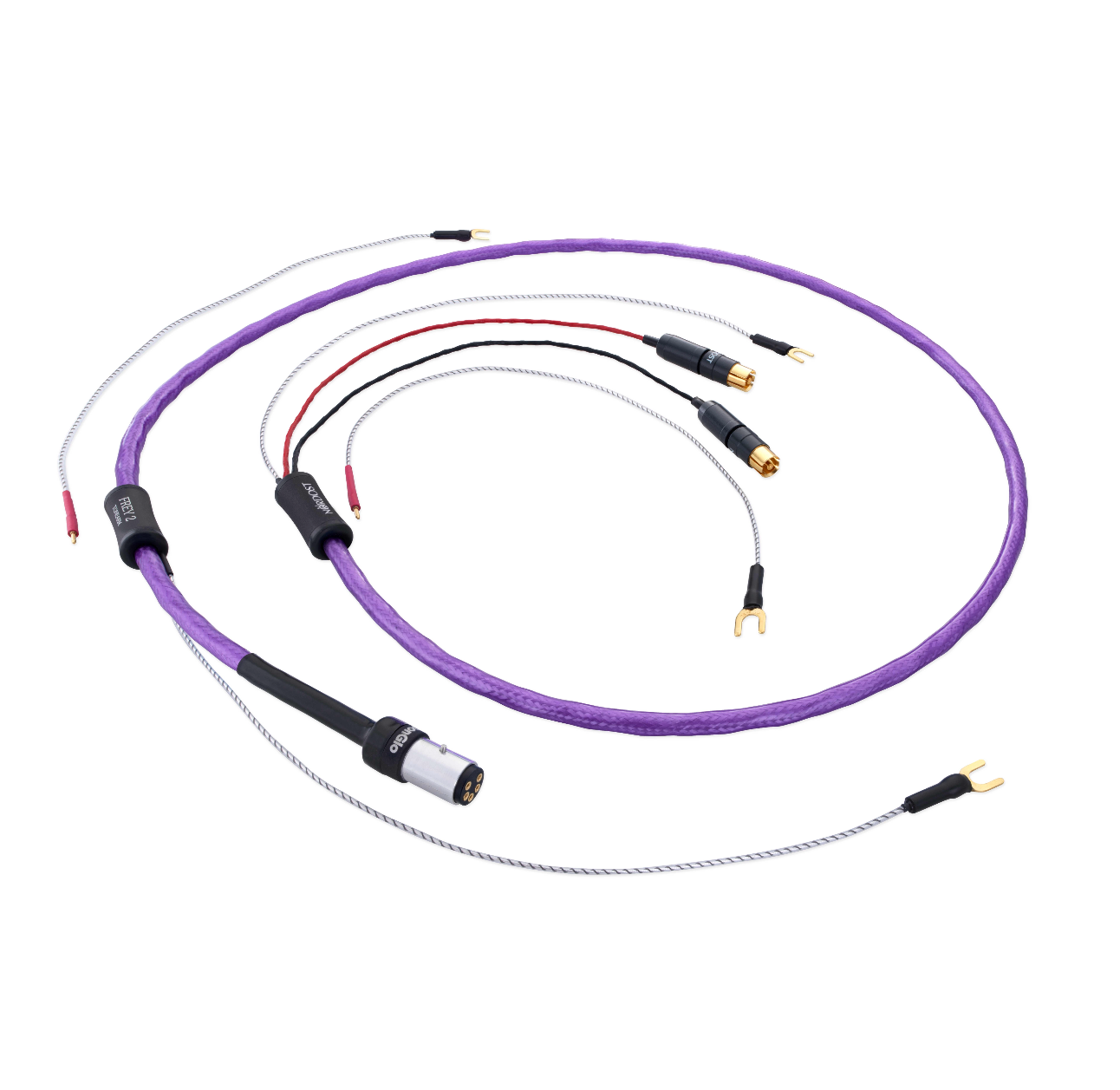NARROW YOUR SEARCH FOR
Audio Cables
Filters
171 products
TELL ME MORE ABOUT
Audio Cables
Audio cables are fundamental components in any sound system, serving as the conduits that transfer audio signals between devices. Their role, while often overlooked, is vital... Read More
Audio cables are fundamental components in any sound system, serving as the conduits that transfer audio signals between devices. Their role, while often overlooked, is vital in ensuring that sound quality is maintained from source to output. Different setups and devices require specific types of cables, each designed to cater to particular audio needs.
What is an Audio Cable?
At its simplest - an audio cable is a cable designed to transmit sound signals from one device to another. Typically made up of a series of wires enclosed in protective insulation (although not always), it carries audio data in either analogue or digital form. These cables ensure that sound travels without significant loss of quality or interference. Depending on the connectors at each end, audio cables can link various devices, such as connecting a music player to speakers, a microphone to a recording system, or a television to a soundbar. The type and quality of an audio cable can influence the clarity, strength, and fidelity of the transmitted sound.
Main Types of Audio Cables:
There are many different types of audio cables - all suited for different equipment, setups and preferences. These are the most common types you'll come across:
-
RCA Cables: Recognizable by their red and white (or sometimes yellow) connectors, they're commonly used for connecting stereo equipment and home theatre systems.
-
XLR Cables: Primarily used in professional audio settings, they have three pins and are known for their balanced sound transmission and resistance to interference.
-
1/4-inch (6.35mm) Jack: Often used for guitars and amplifiers, these are the larger counterparts to the more familiar 3.5mm headphone jacks.
-
3.5mm Jack: Commonly known as headphone jacks, they're used for headphones, smartphones, and portable audio devices.
-
Optical Audio (TOSLINK): These transmit audio signals as light, ensuring minimal signal loss and are often found in home theatre systems.
-
Speakon Cables: Predominantly used for connecting amplifiers to speakers in professional audio setups, they offer secure connections and can handle high power.
-
HDMI: While primarily known for video, some HDMI cables also carry high-definition audio signals, making them a staple in modern home theatres.
-
USB Cables: Used for digital audio devices and computer connections, they can transmit both power and data.
-
Coaxial Digital Cables: Similar in appearance to RCA cables but designed for digital audio signals, often connecting DVDs or Blu-ray players to audio receivers.
How to Choose the Right Audio Cable?
Selecting the appropriate audio cable is crucial for ensuring optimal sound quality and system compatibility. It's always worth chatting with one of our specialists if you have any questions - but here are some factors to consider:
Purpose and Device Compatibility: Begin by identifying the devices you intend to connect. For instance, if you're linking a turntable to an amplifier, you might need RCA cables. Conversely, connecting professional microphones to mixers often requires XLR cables.
Cable Length: Opt for the shortest cable that suits your setup to minimize potential signal loss and interference. However, ensure it's long enough to avoid undue tension or bending.
Signal Type: Determine whether you need a cable for analog or digital signals. While RCA cables are popular for analog connections, TOSLINK or HDMI might be more suitable for digital audio.
Build Quality: A well-constructed cable with robust connectors and quality insulation can reduce interference and enhance durability. Gold-plated connectors, for instance, resist corrosion better than their nickel-plated counterparts.
Balanced vs. Unbalanced: Balanced cables, like XLR, reduce interference, especially over longer distances. They're ideal for professional setups. Unbalanced cables, like most RCA or 3.5mm jacks, are more common in consumer electronics.
Budget: While it's essential to invest in quality cables, there's a wide price range available. Determine a budget but avoid extremely cheap cables, as they might compromise sound quality.
In essence, understanding your audio needs, combined with some technical knowledge, will guide you to the right audio cable, ensuring your sound remains clear and true to its source.
Tips for Audio Cable Care & Maintenance
Believe it or not - just like your other delicate and sensitive pieces of Hi-Fi or Home Cinema kit, your audio cables also need to be maintained and looked after properly as well. Proper maintenance of audio cables can prolong their lifespan, ensure consistent sound quality, and prevent potential issues. Here are some tips to keep your cables in optimal condition:
-
Regular Inspection: Periodically check your cables for signs of wear, damage, or corrosion on the connectors. Early detection can prevent more significant issues down the line.
-
Avoid Sharp Bends: Cables should be coiled naturally, without forcing them into tight loops or sharp bends. This prevents internal damage to the wire and maintains signal integrity.
-
Keep Them Clean: Dust and grime can accumulate on connectors. Use a soft cloth to wipe them down. For more thorough cleaning, isopropyl alcohol can be used cautiously on connectors.
-
Unplug Properly: When disconnecting cables, pull from the plug, not the cable itself. This reduces strain on the cable and prevents potential damage to both the cable and the connector.
-
Store Properly: If a cable isn't in use, coil it loosely and store it in a cool, dry place. Avoid placing heavy objects on top of stored cables.
-
Avoid Tangles: Tangled cables can lead to internal wire damage. Using Velcro ties or cable organizers can help keep them orderly.
-
Stay Away from Heat and Moisture: Excessive heat can degrade the insulation, while moisture can cause corrosion. Store and use cables away from heat sources and damp areas.
-
Label Your Cables: Especially in complex setups, labelling helps you quickly identify each cable's purpose, reducing the need for unnecessary handling or unplugging.
Final Thoughts
Audio cables, often overlooked, play a pivotal role in the overall sound experience. Their quality, type, and maintenance can significantly influence the clarity and fidelity of audio transmission. As you navigate the world of audio setups, remember that the right cable can make a marked difference.
Whether you're setting up a professional studio, a home theatre, or a simple music system, investing time in understanding and caring for your cables is worthwhile. By making informed choices and following maintenance guidelines, you ensure that your sound remains uninterrupted, clear, and true to its source. As with all components in the audio chain, every detail matters, and cables are no exception.
Some Quick FAQ:
What is a 3.5mm audio cable?
A 3.5mm audio cable, also known as a headphone jack cable, is a common type of audio cable that is used to connect devices such as smartphones, tablets, and laptops to headphones or speakers.
What are XLR cables used for?
XLR cables are commonly used in professional audio setups, such as connecting microphones to mixing consoles or audio interfaces.
What are RCA cables?
RCA cables are a type of audio cable that is commonly used for connecting audio and video equipment, such as DVD players and TVs.
Are there premium audio cables available?
Yes, there are premium audio cables available that offer higher-quality materials and construction for enhanced audio performance.
NEED MORE GUIDANCE?
We are here to help
Check out some of our most commonly asked questions.
What do I need to play records?
Getting into vinyl? That’s awesome! We have some curated turntable Hi-Fi packs, with everything you'll need to get spinning right away. But if you want to build your own, read on for all the details.
First off, you'll need a turntable. It's the star of the show, so make sure it’s in good nick, with a decent cartridge and stylus (needle).
Next, there’s the phono preamp. Some turntables or amplifiers come with one built-in, but if yours doesn’t, you’ll need one as a bridge between your turntable and amplifier or powered speakers.
For the sound output, you’ve got two options. You can go with a traditional setup involving an integrated amplifier to take the signal from your phono preamp and power your passive speakers. Alternatively, you can opt for powered speakers, which have the amplifier built in – a handy all-in-one solution.
Speaking of speakers, good ones are a must for that rich, warm vinyl sound we all love. Whether you go for bookshelf or floorstanding speakers (or powered ones) depends on your space and budget.
And there you go! With these essentials, you’ll be ready to dive into your vinyl collection and enjoy that classic sound.
What can a wireless speaker do?
Wireless speakers are a game-changer for how you enjoy music and audio around the house. First off, they let you stream music wirelessly from your phone, tablet, or computer, so no more messing about with cables. You can easily play tunes from Spotify, Apple Music, Tidal or whatever streaming service you fancy.
If you’re into having music everywhere, many wireless speakers offer multi-room audio. You can sync them up to play the same music in every room or control what plays in each room individually, perfect for parties or just keeping the vibes consistent throughout your home.
Voice control is another brilliant feature. Many come with built-in assistants like Alexa, Google Assistant, or Siri. You can control your music with just your voice, ask for the weather, set reminders, or even control other smart home devices.
Sound quality? These little gadgets often pack a punch, delivering high-quality audio that can rival traditional wired setups. Some even offer 360-degree sound, filling the room with music from every angle.
In a nutshell, wireless speakers bring flexibility, convenience, and top-notch sound to your audio experience, making them a fantastic addition to any home. Whether you’re hosting a party, working from home, or just chilling out, they make listening to music a breeze.
How do you choose the right speaker & amplifier combination?
Deciding on a good speaker and amplifier combination is like putting together a perfect wine and cheese pairing—it’s all about balance and harmony. Here’s a conversational guide to help you through it:
First, consider your speakers. These are your main players, so you want to choose ones that fit your space and listening preferences. If you love deep bass and have a bit of room, floorstanding speakers might be your go-to. For smaller spaces or a more subtle look, bookshelf speakers are fantastic.
Now, onto the amplifier. This is where things get interesting. Your amp needs to match your speakers in terms of power and impedance. Check the wattage ratings on your speakers—your amplifier should provide enough power to drive them properly. Too little power and you’ll be missing out on sound quality; too much, and you risk damaging your speakers.
Next, think about the impedance (measured in ohms). Your amp and speakers should be compatible here too. Most speakers are rated at 8 ohms, but some can be 4 or 6. Make sure your amplifier can handle the impedance of your speakers to avoid any performance issues.
Another important factor is the type of sound you’re after. Some amps are known for their warm, rich tones, while others might be more neutral or even slightly bright. It’s a bit like choosing between a vinyl record and a digital stream or CD —each has its own charm. If possible, listen to different amp and speaker combinations to see what sounds best to your ears.
If purchasing online, note that at LE, we have made recommendations on speaker & amplifier combinations that we think sound wonderful together within each product listing.
Don’t forget about connectivity and features. Modern amplifiers often come with a host of options like Bluetooth, Wi-Fi streaming, and various inputs for all your devices. Make sure your amp has the inputs you need for your turntable, CD player, or streaming device.
Finally, consider your budget. Great sound doesn’t always mean breaking the bank, but be prepared to invest to get a quality setup that will last.
In the end, trust your ears. Listen to a few combinations if you can, and go with what makes your music sound the best to you.
Why do I need a headphone amplifier?
If you’re diving into the world of high-quality audio, a headphone amplifier can be a real game-changer. Think of it like this: most standard devices, like your smartphone or laptop, just don’t have the oomph needed to drive headphones properly. They might get the job done, but they won’t do your music justice. A headphone amp gives your headphones the power they need, ensuring you get the volume and clarity that really makes your music shine.
It’s not just about making things louder, either. A good headphone amp can significantly improve sound quality. You’ll get clearer highs, richer mids, and tighter bass, making your favourite tracks sound even better. You might notice details you’ve never heard before, especially if you’re listening to high-resolution audio files.
Premium headphones often have higher impedance, meaning they require more power than your typical audio source can provide. A headphone amp can handle this with ease, making sure your headphones perform at their absolute best. Plus, many amps come with extra features like bass boost, equalisation, and gain control, giving you more ways to tweak the sound to your liking.
In short, if you’re passionate about your music and want to hear it in the best possible way, a headphone amplifier is definitely worth considering. It’s all about unlocking the full potential of your gear and really getting the most out of your listening experience.
Where should I start when designing a home cinema?
Designing your own home cinema? That's awesome! We are here to help walk you through the process, but as a starting point, here’s what we would recommend and where to kick things off:
First up, pick your spot. For most people this is your existing lounge room, but if you have an underused garage, or spare bedroom, then you have an opportunity to create your very own true Home Cinema experience. Find a room that’s just right—not too cramped and ideally away from noisy areas. This sets the stage for that immersive movie experience.
Next, think about how you’ll set things up. Plan where your seats will go and where to place your projector screen for the best view from every angle. It’s all about creating that comfy, cinematic vibe.
Sound matters, too. Consider if you want a wireless system for simplicity or a full surround sound speaker system with AV receiver for that surround-sound thrill. Think about soundproofing or adding acoustic panels or thick carpets to really amp up the audio quality of the room.
Now, onto the screen. Decide between a crisp TV or a projector setup, depending on your room size and personal style. Maybe even throw in some dimmable lights or smart lighting to set the mood just right.
And hey, don’t forget comfort. Invest in plush cinema seating and think about the décor—whether it’s movie posters, blackout curtains, or popcorn machine & bar area, whatever gives you that true cinema feel.
Lastly, tech it up! Make sure everything—from your Blu-Ray player & Apple TV to your gaming consoles—is set to sync perfectly with your new setup.
With these steps, you’re on your way to creating a home cinema that’s not just a space, but an experience. Enjoy movie nights like never before!


